
views
Determining the Height and Width
Figure out if the door is square. A door is square if it is level and even (as opposed to square in shape). Use a tape measure to find the distance from the bottom left corner of the door to the top right corner of the door. Then, measure from the bottom right corner to the top left corner. The measurements should match up exactly. If the measurements vary even slightly, you’ll need to adjust the door and/or the jamb so it is square before moving forward.

Measure from the bottom of the sill to the underside of the top frame. Place the end of the tape at the bottom inside of the door frame, and pull it up to underside of the top door frame. Make sure to place it about 6 inches (15 cm) from the opposite door jamb just in case the frame isn’t true. Jot dot the number as the door's height.

Measure the frame's width in 3 places. Hold the measuring tape inside the door frame about 6 inches (15 cm) from the top, and pull it across to the opposite side. Next, move the measuring tape down to approximately 6 inches (15 cm) above the bottom of the door frame and measure from side to side again. Finally, slide the tape measurement up to the approximate center of the door frame and pull it across from one side to the other. The smallest measurement is the door's width. For each of the measurements, hold the tape measure so it's parallel to the ground. You don't need to find the exact center of the door frame. Eyeball it so the tape measure is roughly at center. It's a good idea to repeat the measurements to ensure that they're accurate.
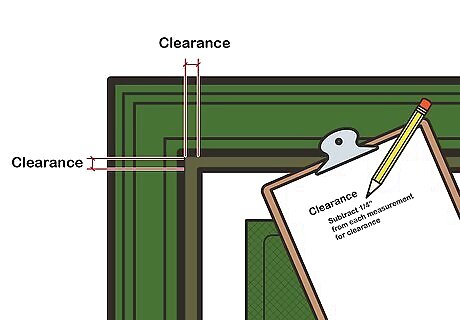
Subtract ⁄4 inch (6.4 mm) from each measurement for clearance. When you’re sure that you have the measurements correct, it’s important to allow for the ⁄8 inch (3.2 mm) clearance necessary between the screen door and the frame. When you take off ⁄4 inch (6.4 mm) from both the height and the width, you’ll have the proper size for the door. For example, if the width of the door measures 32 ¼ inches and the height measures 80 ¼ inches, you should actually look for a door that's 32 inches (81.3 cm) wide and 80 inches (200 cm) in height.
Replacing the Screen Door
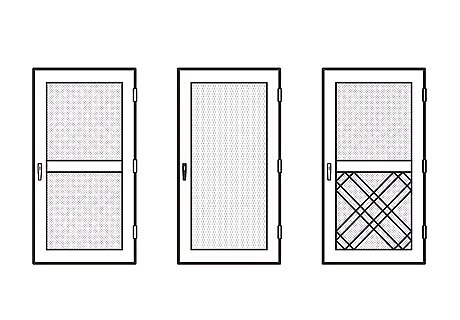
Choose a replacement door based on the measurements. Once you have the right measurements for your door, you can look for a replacement at your local home improvement or hardware store. Keep in mind that the door sizes you’ll find at the store allow for some variation in the rough opening. This means a screen door with a width that measures 34 inches (86 cm) can fit frames from roughly 33.875 inches (86.04 cm) to 34.375 inches (87.31 cm). There will be some variation in the height measurements as well. An 81 in (210 cm) door can usually fit in an opening that’s 80 inches (200 cm) to 81 inches (210 cm).
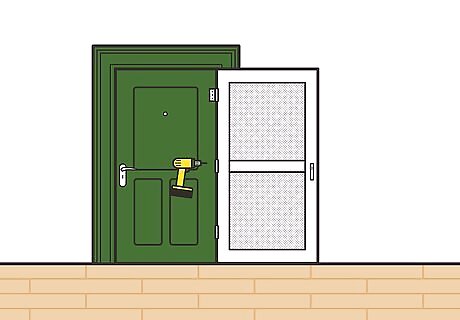
Unscrew the old screen door. Before you can replace the old door, you must remove it from the frame. Use a power screwdriver to remove the mounting screws and taking the door off the frame. Dispose of it according to your local trash regulations. If your door frame needs painting, do it right after you remove the old screen door. It's much easier to paint without the door in the way. If your old door had a latch, you'll need to remove the latch mechanism as well. In most cases, the latch is held in place with screws, so use the power screwdriver to take it off.
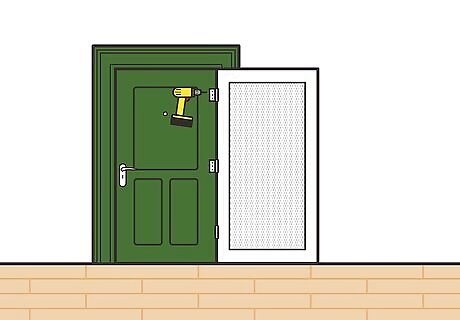
Set the new door in place and screw it in. Lift the new screen door into place in the frame. Use a power screwdriver or drill to screw the hinges into place on the door casing side. If possible, have a friend or family member help you. It's much easier to screw in the hinges if the door is held in place.
Pre-drill the holes for the z-bar. Most pre-hung screen doors come with an exterior trim frame known as the z-bar, which allows the door to fit in an existing cut-out. Open the screen door and place the z-bar in beneath the top casing. Close the door again to hold the z-bar in place, and use a pencil to mark each pre-drilled hole on the frame. Remove the z-bar, then use a drill bit slightly smaller than the screws to pre-drill a hole at each mark. You may need to use tape to hold the z-bar in place. Pre-drilling the holes can prevent the wood from cracking.
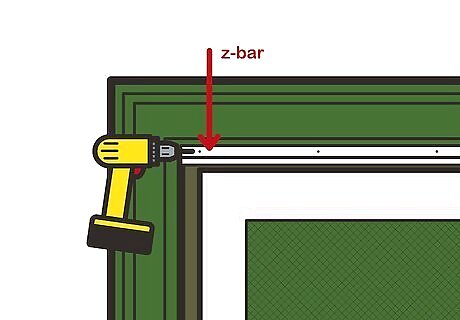
Screw the z-bar in place. Once you’ve pre-drilled all the holes, put the z-bar back in place. Use a drill to install a screw in each hole. Use the screws that come with the screen door to secure it.
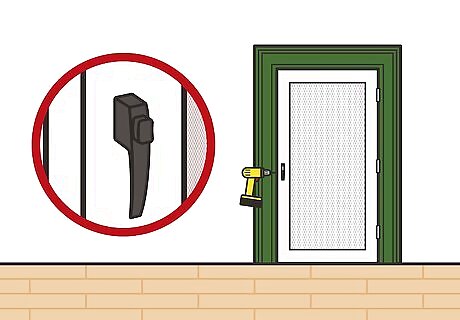
Install the door latch, if included. Some screen doors have latches to lock the door. If your door has a latch mechanism, consult the manufacturer's instructions on the proper way to mount it on the door. In most cases, the holes for the latch are pre-drilled into the z-bar.




















Comments
0 comment